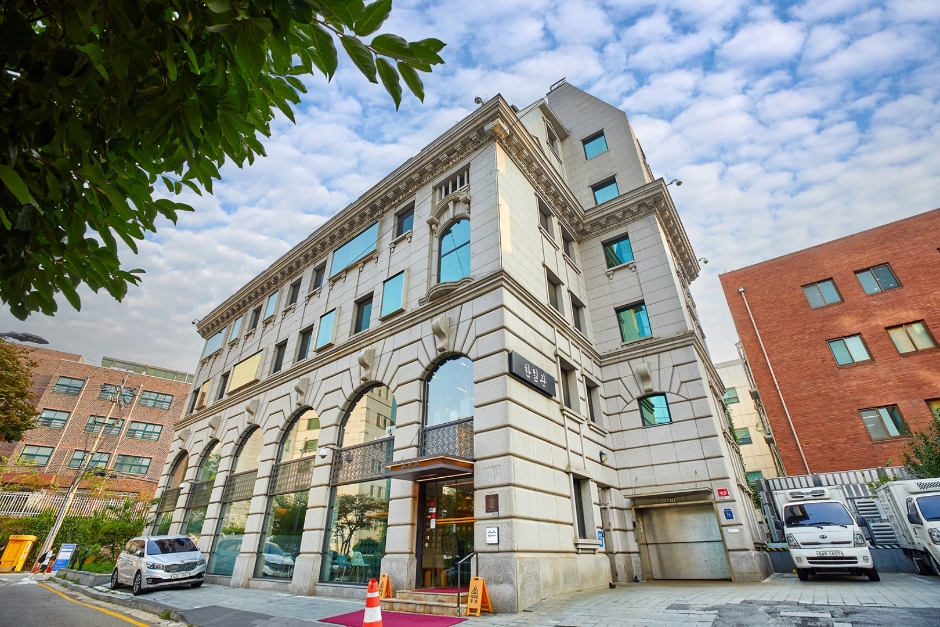Mo & Bless Hair Transplantation [Tax Refund Shop] (모앤블레스의원)
5.1Km 0 2024-06-27
208, Apgujeong-ro, Gangnam-gu, Seoul
-
CheongKwanJang - Apgujeong Branch [Tax Refund Shop] (정관장 압구정)
5.1Km 0 2024-04-18
#103, 306, Apgujeong-ro, Gangnam-gu, Seoul
-
CheongKwanJang - Jangan Branch [Tax Refund Shop] (정관장 장안)
5.1Km 0 2024-04-18
120, Janghan-ro, Dongdaemun-gu, Seoul
-
ARTKOREA.CO.LTD [Korea Quality] / 주식회사 아트코리아 [한국관광 품질인증]
5.1Km 5871 2020-09-28
231, Jahamun-ro, Jongno-gu, Seoul
+82-2-394-5551~2
Located in Buam-dong in Jongno-gu, Seoul, Art Korea is a cosmetic select shop that opened on January 1, 2013. Covering a total area of about 630 ㎡, the store sells a comprehensive collection of Korean and imported cosmetics as well as cosmetics created by Art Korea, including Yihan Carino, The Saem, Demeter, The Faceshop, Re-ofe, Mediheal, VOV, It’s Skin, Jayjun, AHC, Enprani, and Clio. With samples from brands available and staff offering consultation, the store makes it convenient for customers to compare and purchase products by skin type and concern.
As a tax refund shop for foreigners, Art Korea offers convenient services including round-the-clock foreign language interpretation in English, Chinese, and Japanese. The store regularly offers various events including special discounts and gifts at the event hall in the center for group tourists and/or at the designated event hours.
Dongnimmun Gate (독립문)
5.1Km 30799 2022-12-15
251, Tongil-ro, Seodaemun-gu, Seoul
Dongnimmun stands at the location originally known as Yeongeun, where envoys were once treated. When a Chinese envoy visited, the King would go out through this door to greet. In 1898, to announce the independence from Japan, Dongnimun was constructed with the fund collected by the citizens. The traces of the past still remain on Dongnimmun with two pillars in front of Dongnimmun being the remains of Yeongeunmun.
The Arc de Triomphe in France can be recalled in comparison to Dongnimmun. Dongnimmun was built using granite with a passageway x_height of 14.28 meters. On the top it is written ‘Dongnimmun’ in Korean with the national flag drawn on each side. On the inner-left side there are stone stairs leading to the attic. The national flower Mugunghwa are planted around Dongnimmun. Now it is surrounded by roads and it is eye-catching to view when passing by.
Olive Young - Apgujeong Station Branch [Tax Refund Shop] (올리브영 압구정역)
5.2Km 0 2024-04-22
878, Nonhyeon-ro, Gangnam-gu, Seoul
-
Seodaemun Prison History Museum (서대문형무소역사관)
5.2Km 155856 2022-12-15
251, Tongil-ro, Seodaemun-gu, Seoul
+82-2-360-8590
Seodaemun Prison was built under the Japanese administration to imprison independence movement activists. It first opened on October 21, 1908 under the name Gyeongseong Prison. Eventually, so many activists were imprisoned that the building had to be expanded. At that time, the name changed to Seodaemun Prison on September 3, 1912. Eighty years later, the prison was turned into Seodaemun Independence Park on August 15, 1992 to commemorate the Korean patriots who were tortured in prison, giving their lives for freedom. Of the many buildings, only seven were preserved for their historical significance, among which three prison buildings and the execution site were designated as a Historic Site. In 1998, the park underwent another transformation into today's Seodaemun Prison History Hall to educate the public on the importance of Korea's independence and the sacrifices of those who fought to achieve it.
Seodaemun Independence Park (서대문독립공원)
5.2Km 28878 2022-12-15
251, Tongil-ro, Seodaemun-gu, Seoul
+82-2-3140-8305
Seodaemun Independence Park was built on the former Seoul Detention Camp. It was used to imprison thousands of Korean independence activists until the liberation from the Japanese occupation on August 15, 1945, as well as the political prisoners during the political turmoil in the 1960s. When the prison was moved to Uiwang-si, Gyeonggi-do in November 1987, the area was restored and turned into a memorial park in August 15, 1992 to honor the sacrifices of the martyrs. The park preserves seven prison buildings, an execution ground, underground women’s prison, and the March 1st Movement Monument that has been moved from Tapgol Park in Jongno.
One of the most significant monuments of the Seodaemun Independence Park is Dongnimmun Gate (Independence Gate), which has been designated a Historic Site. Nearby is Dongnipgwan (Independence Hall), originally called Mohwagwan, which was used to greet Chinese envoys during the Joseon dynasty. Today, the hall enshrines 2,327 tablets inscribed with the names of Koreans who died for the cause of national independence. Standing right next to Dongnimmun Gate are the remnants of Yeongeunmun Gate, another Historic Site. Other sights inside the park include the Patriotic Martyr Monument, Declaration of Independence Monument, and Statue of Dr. Seo Jae-pil, who was an independence activist and publisher of Korea’s first independent newspaper. The main highlight of the park is the Seodaemun Prison History Hall, a former prison building that was renovated into a history museum.
Hanilkwan Apgujeong (한일관 압구정점)
5.2Km 26823 2024-03-20
14 Apgujeong-ro 38-gil, Gangnam-gu, Seoul
Originally opened in Pimatgol Alley (a narrow alley connecting the two main roads of Jongno and Namdaemun-ro, which was frequented by horse riders during the Joseon period) in 1939, Hanilkwan is said to be the originator of Seoul-style bulgogi and has featured multiple times in Michelin Guides. It relocated to Apgujeong when Pimatgol Alley underwent redevelopment. Aside from its main branch at Apgujeong, it also has branches in Yeongdeungpo, Euljiro, Gwanghwamun Gate, and Hanam, Gyeonggi-do. Unlike the more conventional grilled bulgogi, which grills marinated meat on fire, bulgogi here is Seoul-style bulgogi served as a hot pot-like dish. The restaurant also serves other menus like Seoul-style cold buckwheat noodles, galbi soup, and mung bean pancakes.
![Mo & Bless Hair Transplantation [Tax Refund Shop] (모앤블레스의원)](http://tong.visitkorea.or.kr/cms/resource/13/3314813_image2_1.jpg)
![CheongKwanJang - Apgujeong Branch [Tax Refund Shop] (정관장 압구정)](http://tong.visitkorea.or.kr/cms/resource/21/2879521_image2_1.jpg)
![Art Korea [Tax Refund Shop] (주식회사 아트코리아)](http://tong.visitkorea.or.kr/cms/resource/83/2888383_image2_1.jpg)
![CheongKwanJang - Jangan Branch [Tax Refund Shop] (정관장 장안)](http://tong.visitkorea.or.kr/cms/resource/35/2889535_image2_1.jpg)
![ARTKOREA.CO.LTD [Korea Quality] / 주식회사 아트코리아 [한국관광 품질인증]](http://tong.visitkorea.or.kr/cms/resource/34/2628634_image2_1.jpg)

![Olive Young - Apgujeong Station Branch [Tax Refund Shop] (올리브영 압구정역)](http://tong.visitkorea.or.kr/cms/resource/97/2879597_image2_1.jpg)

 English
English
 한국어
한국어 日本語
日本語 中文(简体)
中文(简体) Deutsch
Deutsch Français
Français Español
Español Русский
Русский